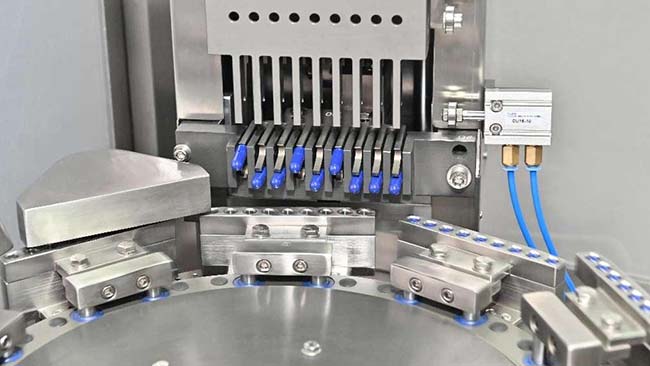柔軟で効率的、そして消費者に優しい包装ソリューションに関して言えば、サシェ包装は画期的な存在となっています。 医薬品食品業界や化粧品業界において、サシェ包装は携帯性の向上、製品の品質維持、そして生産コストの最適化を実現する信頼できる選択肢です。サシェ包装が自社製品に適しているかどうかご検討されている場合は、その利点、限界、そして用途を理解することが不可欠です。

サシェ包装とは何ですか?
サシェ包装は、製品を1回分ずつ収納するために設計された、多用途でコンパクトなソリューションです。これらの小さな密封された袋は、プラスチックフィルム、アルミホイル、紙ラミネートなどの柔軟な素材で作られています。鎮痛剤の1回分、カフェの砂糖の袋、販促キットに入っているシャンプーのサンプルなど、日常生活で目にしたことがあるかもしれません。
このタイプの包装は、幅広い業界に対応できるため、特に人気があります。製品を汚染から守り、鮮度を維持し、エンドユーザーに比類のない利便性を提供します。内容物の品質と安全性を維持するために厳選された素材を使用しているため、サシェは固形製品と液体製品の両方に最適な選択肢です。
サシェ包装の主な利点
1. 利便性と携帯性
サシェは驚くほど軽量でコンパクトなので、外出先での持ち運びに最適です。旅行中にインスタントコーヒー、リフレッシュスキンケア製品、薬など、すぐに必要なものがあれば、サシェは究極の利便性を提供します。
1回分ずつの服用量にすることで、推測する必要がなくなり、一定量の服用が確保され、無駄が削減されます。これは消費者にとって使いやすさを意味し、企業にとっては顧客満足度の向上につながります。
2. 費用対効果
生産の観点から見ると、サシェ包装は非常に経済的です。瓶やボトルなどのかさばる包装に比べて、使用する材料が最小限に抑えられるため、機能性を損なうことなくコストを削減できます。
さらに、サシェは平らでコンパクトなデザインのため、保管や輸送が容易です。国内配送でも海外配送でも、サシェは物流コストの削減に役立ちます。
3. 保存期間の延長
サシェ包装の最大の強みの一つは、製品の完全性を維持する能力にあります。高バリア素材は、内容物を湿気、酸素、光から保護し、より長い保存期間を実現します。これは、鮮度と効能が不可欠な医薬品や食品にとって特に重要です。
4. カスタマイズオプション
サシェはマーケティング担当者にとって夢のような製品です。コンパクトなデザインは、鮮やかなブランドイメージ、ロゴ、そして重要な情報を効果的にアピールできます。また、商品のニーズに合わせて、様々なサイズ、形状、素材からお選びいただけます。棚に並べたパッケージが、きっと目を引くでしょう。
サシェ包装の一般的な用途
医薬品
医薬品業界では、粉末、顆粒、液剤などの単回投与の薬剤にサシェが広く使用されています。風邪薬、栄養補助食品、経口補水液などの製品に最適です。
サシェ包装は、患者と医療従事者の両方にとって、投薬量の正確性を高め、衛生面を向上させます。投与量ごとに個別に密封することで、サシェ包装は汚染リスクを最小限に抑え、利便性を高めます。

食品・飲料
砂糖の小袋からインスタントコーヒーの小袋まで、この包装形態は食品業界では定番です。調味料、スパイス、粉末飲料などの1食分ずつの包装に最適です。サラダドレッシングやソースなどの液体製品も、小袋のメリットで散らからず、分量を管理できます。

化粧品とパーソナルケア
サシェは、シャンプー、コンディショナー、ローション、フェイスマスクなどの美容製品に広く使用されています。使い切りタイプは特にプロモーションサンプルとして人気があり、ブランドは最小限のコストで新製品を消費者に紹介することができます。

サシェ包装の仕組み
サシェ包装工程は効率的で高度に自動化されています。機械がサシェのカット、成形、充填、そしてシールまでを、シームレスに一工程で行います。工程の内訳は以下の通りです。
ステップ | 説明 |
材料の選択 | 製品のニーズ(バリア特性など)に適した柔軟なフィルムまたはラミネートを選択します。 |
形にする | 機械は材料をポーチまたはサシェの形に成形します。 |
充填 | 製品は正確に計量され、小袋に詰められます。 |
シーリング | 気密保護を確実にするために、サシェは熱シールされています。 |
カットと印刷 | 個々のサシェはカットされ、オプションでブランド名や製品の詳細が印刷されます。 |
サシェ包装機には主に 2 つのタイプがあります。
-水平製袋充填シール機(HFFS):大規模生産に最適です。
-縦型製袋充填シール機(VFFS):コンパクトで中規模の業務に適しています。
サシェ包装の限界
サシェには数多くの利点がありますが、欠点がないわけではありません。
1. 環境問題
サシェ包装に対する主な批判の一つは、環境への影響です。使い捨てプラスチックは廃棄物の増加につながり、持続可能性への懸念が高まっています。多くの企業がこの問題に対処するため、リサイクル可能で生分解性のある代替品を模索しています。
2. 数量限定
サシェは使い捨て用途に最適です。製品に大容量が必要な場合は、サシェは最適な選択肢ではないかもしれません。
3. 複雑な設計要件
サシェには繊細な製品が入っていることが多いため、材料と機械の選定は厳密に行う必要があります。そのため、従来の包装に比べて初期設定が複雑になる場合があります。
適切なサシェ包装ソリューションの選び方
完璧なサシェ包装ソリューションを選択するには、いくつかの考慮事項があります。
1. 製品ニーズを定義する
製品の性質(液体、粉末、顆粒など)を評価します。保存期間、環境要因への感受性、そして想定される用途を考慮します。
2. 材料の選択肢を評価する
湿気に敏感なアイテムにはホイルラミネート、光に敏感な製品には UV カットフィルムなど、適切な保護を提供する素材を選択してください。
3. 適切な機器を選択する
大規模な製造業者であれば、HFFS機がニーズに合うかもしれません。小規模な製造業者であれば、VFFS機の方が費用対効果の高い選択肢となるかもしれません。
4. 持続可能性を考慮する
企業のサステナビリティ目標に合致する素材とプロセスを探しましょう。環境意識の高い消費者にアピールするために、リサイクル可能なフィルムや生分解性のオプションを検討しましょう。
サシェ包装の将来動向
1. 持続可能な素材
環境に優しい代替品を求める動きが業界に新たな変化をもたらしています。企業は環境への影響を軽減するため、堆肥化可能なフィルムやリサイクル可能なラミネート材の実験を行っています。
2. スマートパッケージング
QRコードや温度感応インクといった革新的な技術が、サシェ包装に取り入れられています。これらの機能は、トレーサビリティと消費者エンゲージメントの向上に寄与します。
3. パーソナライゼーション
消費者がユニークな体験を求めるようになるにつれ、カスタマイズされたサシェデザインは重要な差別化要因となりつつあります。大胆なブランディングからインタラクティブなパッケージまで、パーソナライゼーションは今後も定着していくでしょう。
結論
サシェ包装は、多用途で費用対効果が高く、消費者に優しいソリューションであり、様々な業界に革命をもたらしました。製品の賞味期限の延長、携帯性の向上、廃棄物の削減など、どのようなご要望にもサシェは魅力的な選択肢となります。業界が革新を続ける中で、進化する消費者ニーズに応える、より持続可能でカスタマイズされたソリューションが期待できます。


